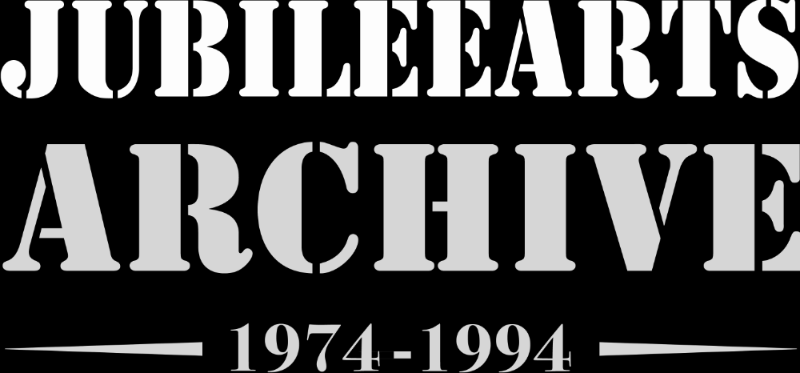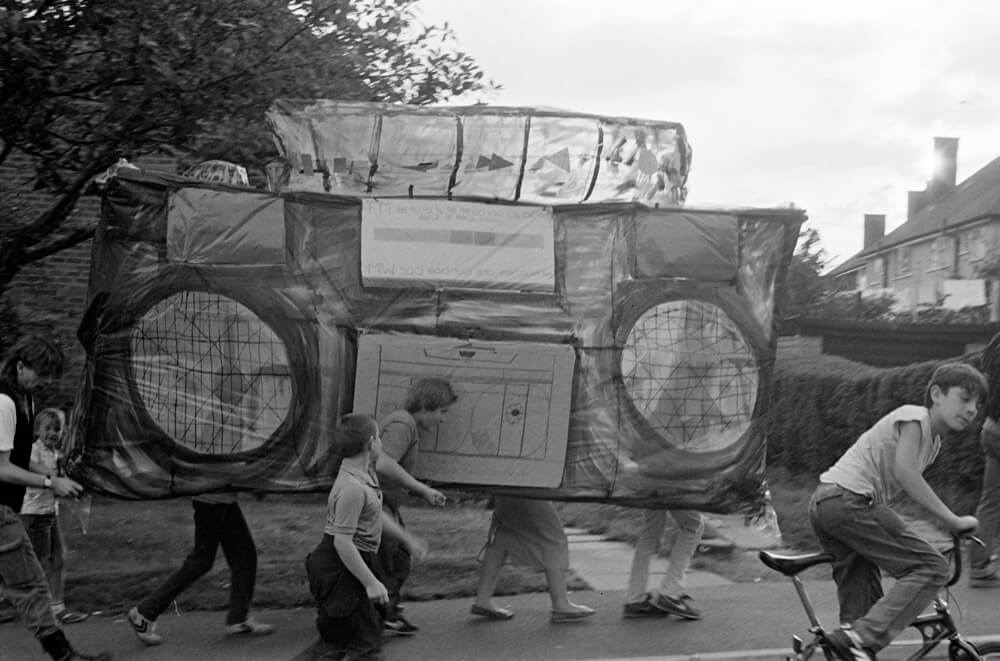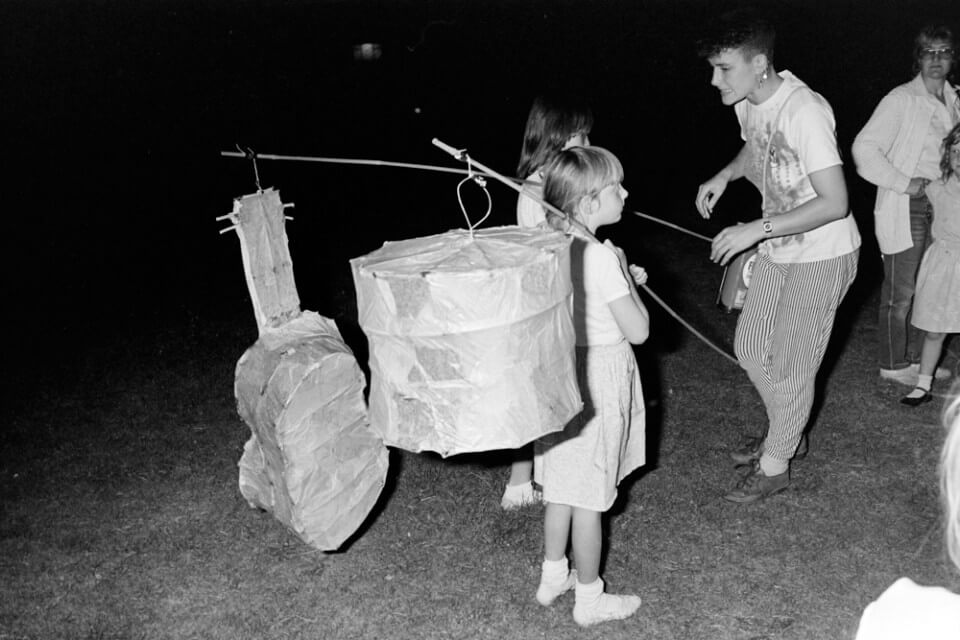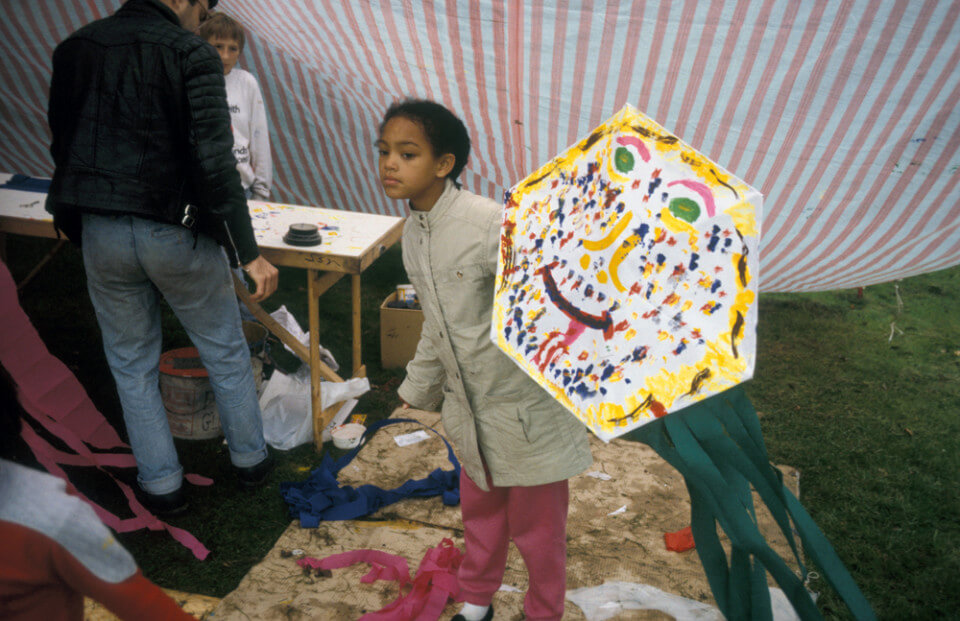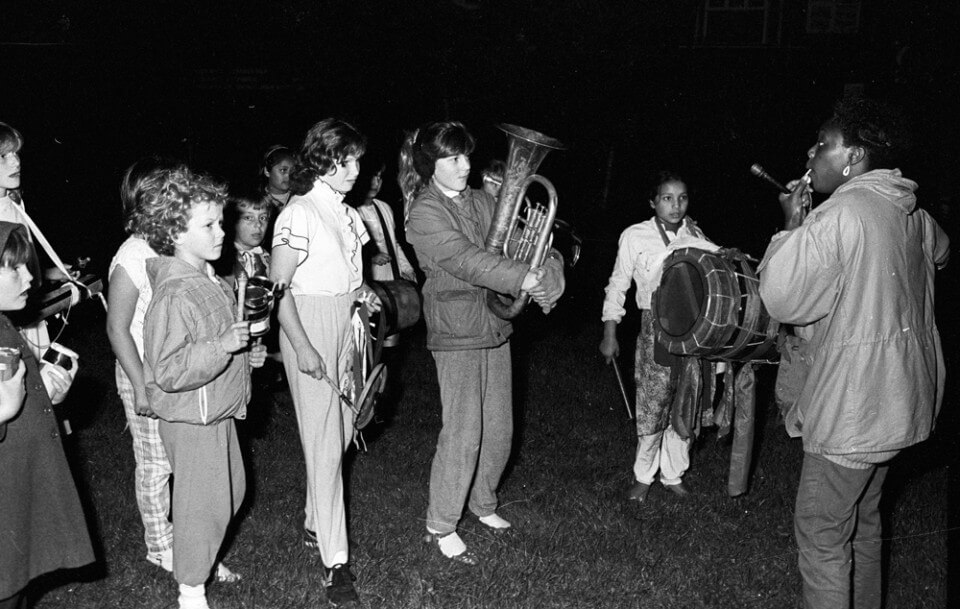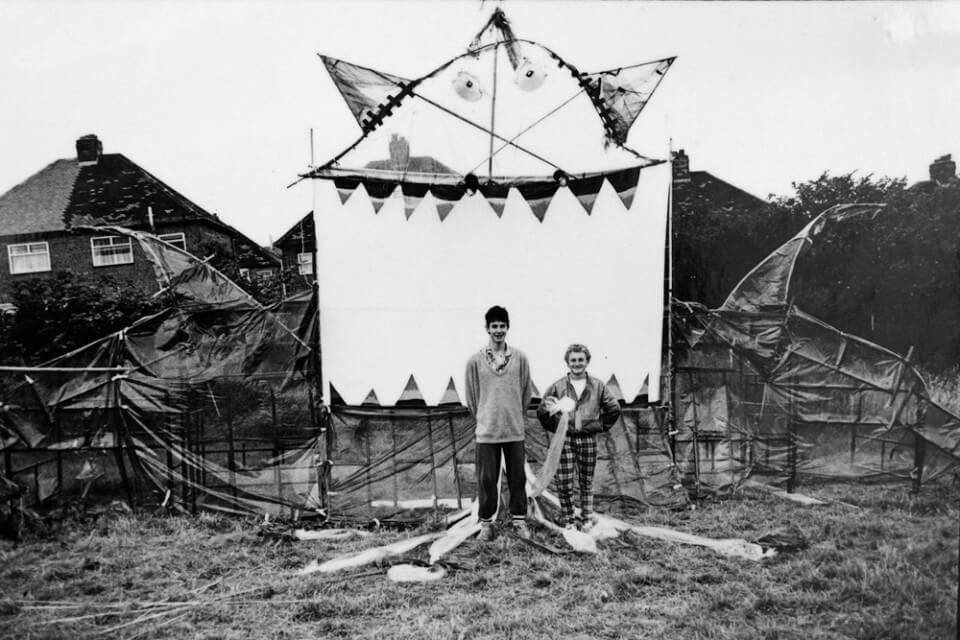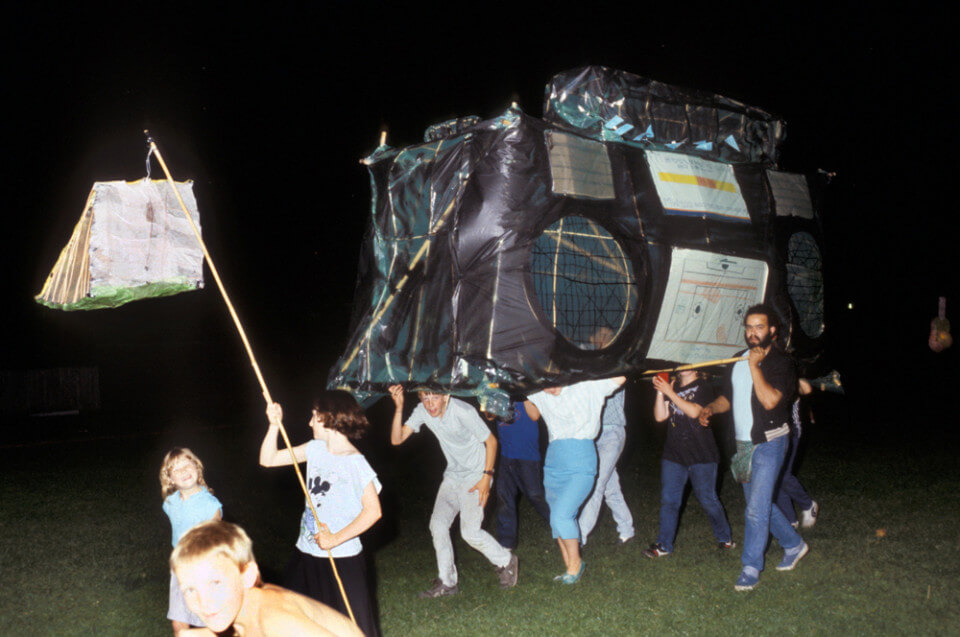Society deems certain types of heritage to be of value, say an oak timbered merchant’s house managed by the National Trust, or an Iron Age earthen hill fort such as Maiden Castle in Dorset, or a miniature netsuke sculpture from 17th century Japan.
Community artists in the 1970s and 1980s explored other values, such as folklore and traditions, language and knowledge, passed on to us by the immediate and past generations. They celebrated shared and communal memories, reveled in stories of a locality or a neighbourhood, whether fantasy or urban myth. They were interested in creating events which gathered people together, which involved young people (and older people) in physically making large objects which were used for parades and parties, and to tell a story. They used junk materials, plastic, wood, cardboard, bamboo, withies, making hand crafted and usually temporary objects. Large animals or birds, spaceships, pirate ships, all kinds of fantastical creatures – or here, in this image, an oversize ghetto blaster. This object would not be preserved in a museum – it was likely recycled into something else – but the photograph preserves it.
Here we see the object is carried down a local street on Wollaston Farm Estate in Dudley, as it is ritually processed from door to door, calling on people to gather at a local green space to enjoy an evening’s entertainment prepared earlier in the day. The evening might involve fireworks, music, dancing, food, poetry, some theatre, breaking down distinctions between professional and amateur. The events ran late into the night. There were no complaints, no police interventions, no noise abatement officers. No event was ever quite the same, as any outcome was decided by whomever participated, what they decided to make and to share and to celebrate. And to enjoy.
The act of celebration, to borrow from the words of theatre director Chris Baldwin, creates freedom for us to think and feel about what ‘being together’ means. He adds, ‘Culture is the space to which we turn to quench our human need to inhabit communal utopian spaces – even when such spaces are ephemeral.’
